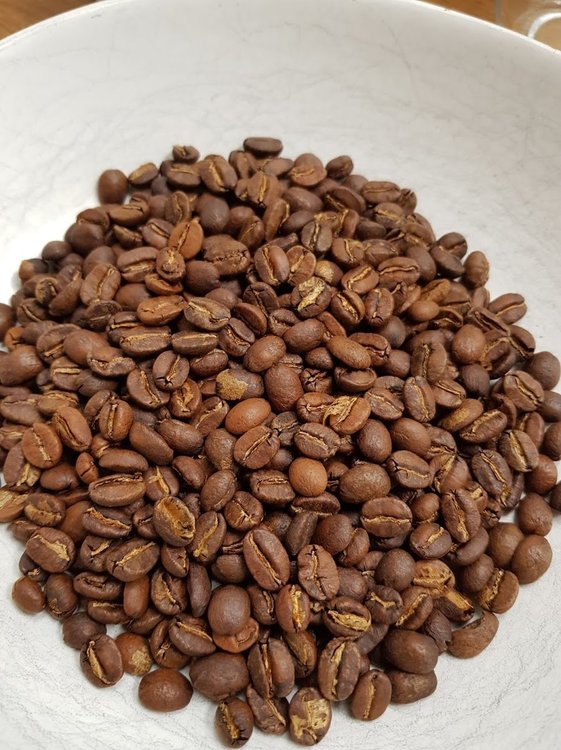Roasting coffee in a Severin Popcorn popper 2
Following on from the previous post, I’ve now made the changes to allow the Severin’s dc motor (fan) to be controlled separately from the ac heater coil. (Basically you snip the circuit after the rectifier and connect your own dc supply to the pins). This means the heater piece and the motor+fan are completely separate.
Along the way I found out a few things about the Severin and thought I’d write it up.
IMPORTANT: There’s a bunch of pictures of extremely dangerous live circuits with cheap equipment here. I have some safeties (RCD plug, rubber gloves, earthed casing on dimmer checked each time), and this is still very dangerous. Please don’t copy anything I’ve done.
So I basically disconnected all the bits and put it together outside the casing. I did this for ease of fiddling and rustic appeal. I mounted it on a bean tin can full of stones for stability, with some holes drilled for airflow to the fan.
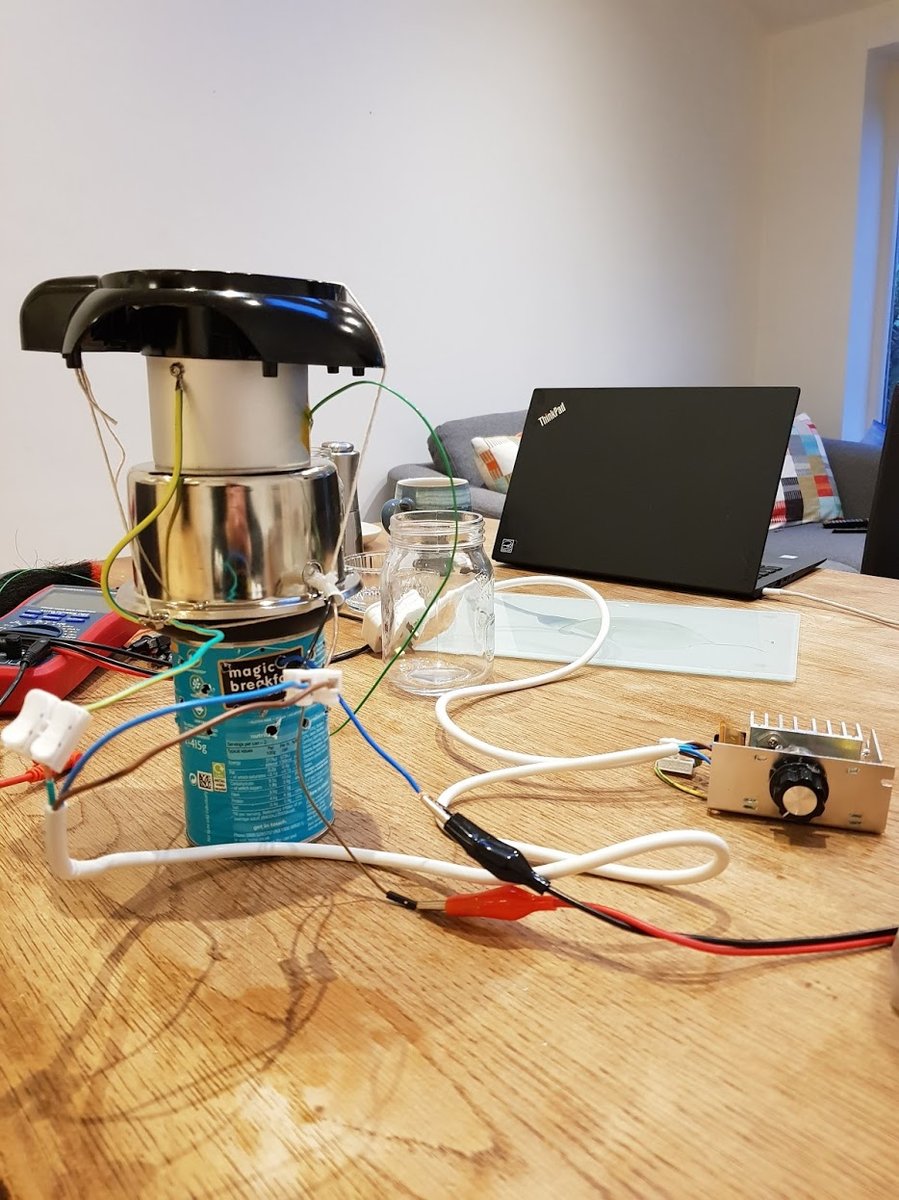
The DC fan motor on a Severin is an RS-385SA-2065R. I think this is rated 18v (see the production description tab on this page)
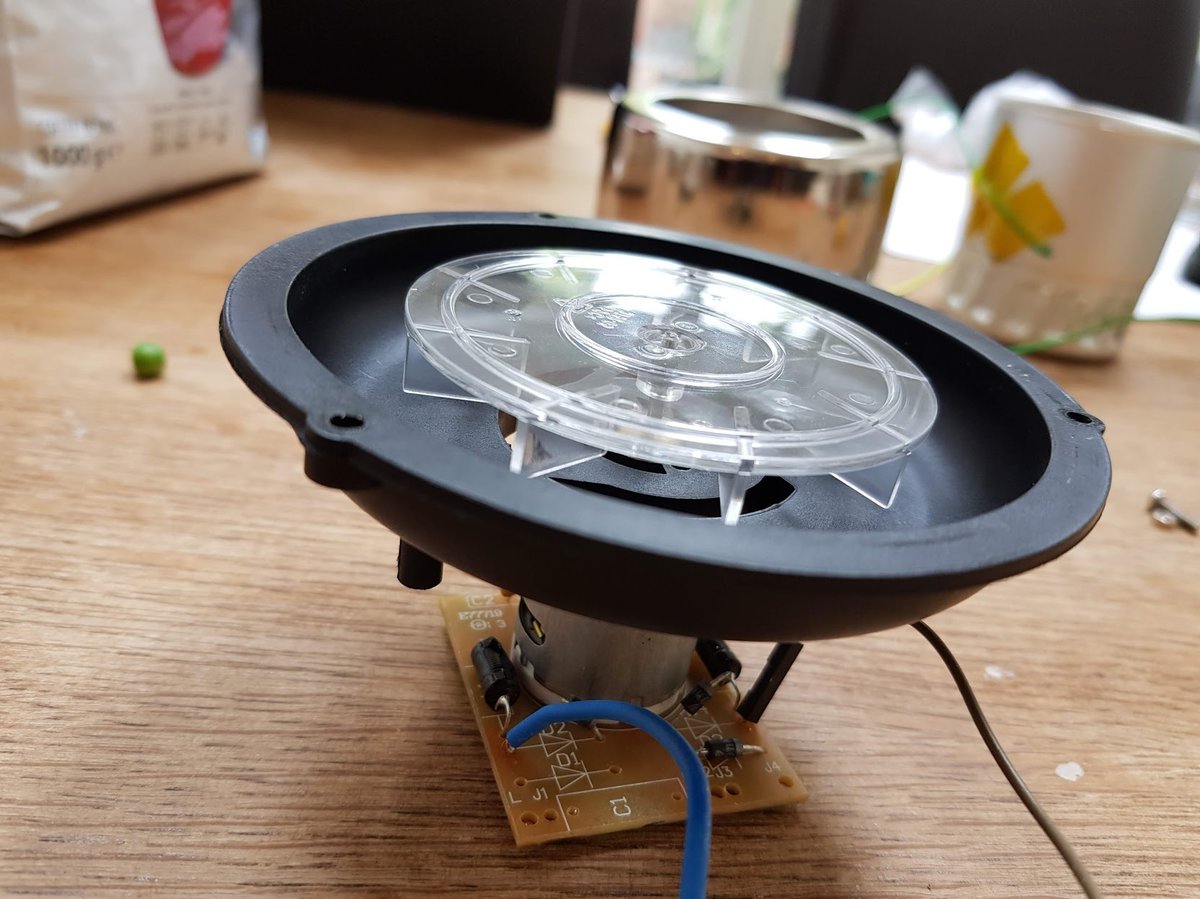
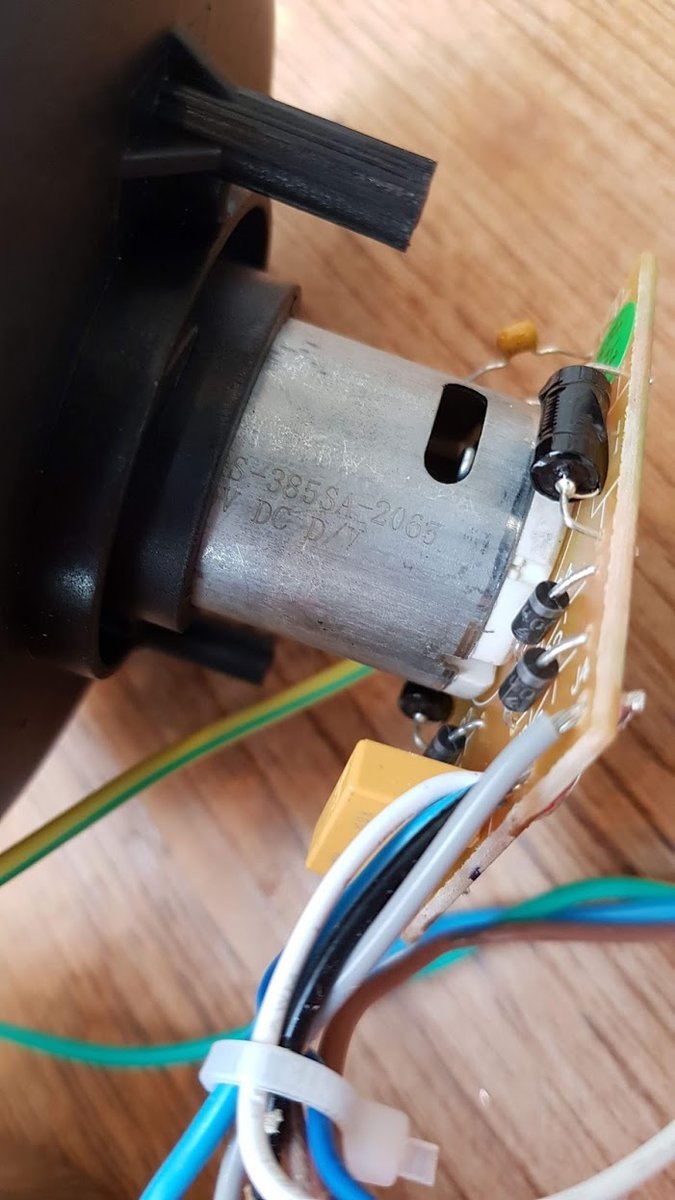
I found I could jack the motor up to 30v (as high as my cheap bench supply goes) where it draws around 3 amps. According to the spec the stall load at 18v is 5.52 amps, so I’m a bit under that. At this voltage it will easily agitate 100g of greens without assistance, and probably quite a bit more. I should do some experimenting to see how high I can take the bean mass.
I should note I don’t have any experience with electric motors - I’m guessing that abusing the voltage like this will cause it to break at some point. Does anybody have opinions/experience of running cheap motors above their rated voltage?
I guess I also might be able to replace the motor with something more powerful.
The thermal fuse below the heating element in the Severin is rated for 240 degrees C (and is behind a card heat shield), so I guess that’s why you can use a Severin popper for coffee roasting out of the box without modding it. From reading accounts of other popcorn makers it seems that most have fuses at lower temperatures and these need to be bypassed.
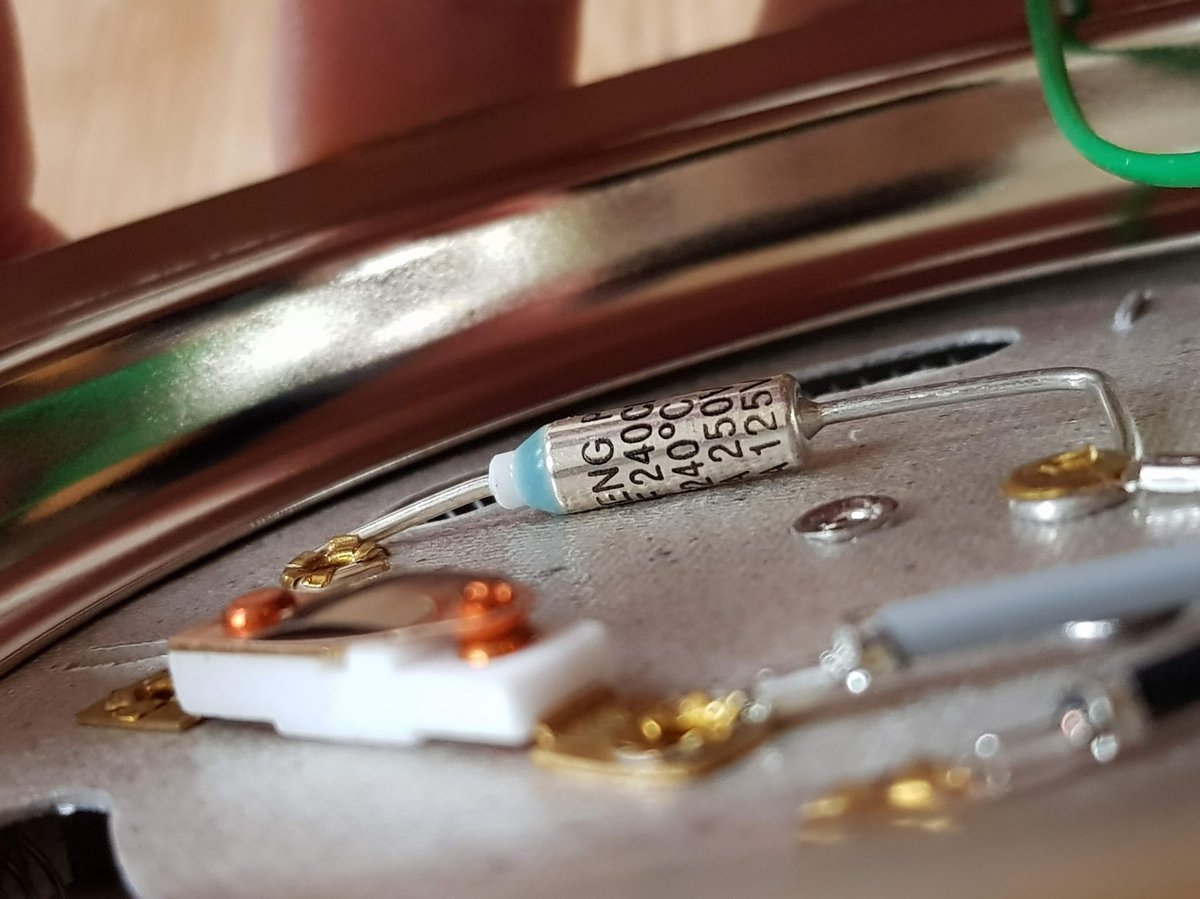
I experimented with connecting the heater wires up to mains AC and found that black + brown cause both heating elements to glow so I snipped the grey wire.
Before:
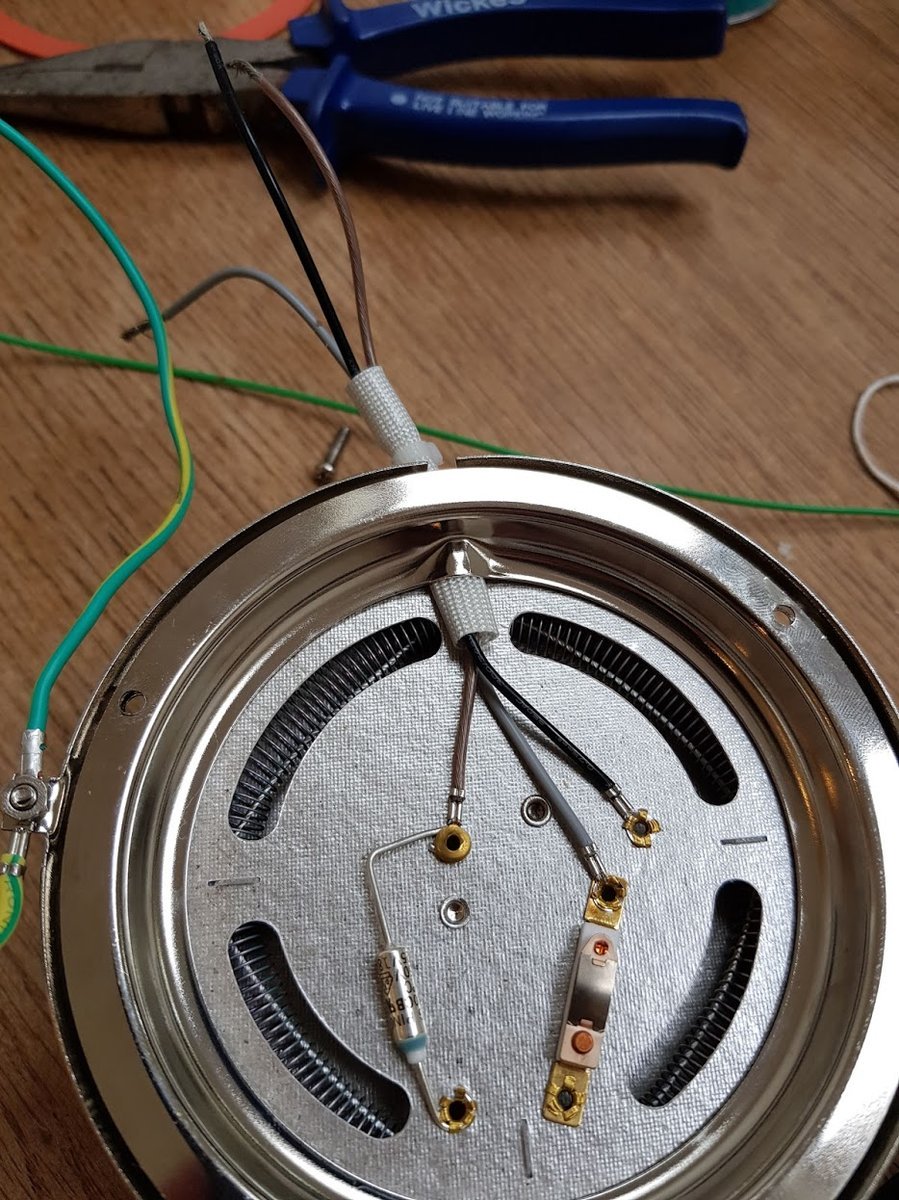
After snipping the grey wire:
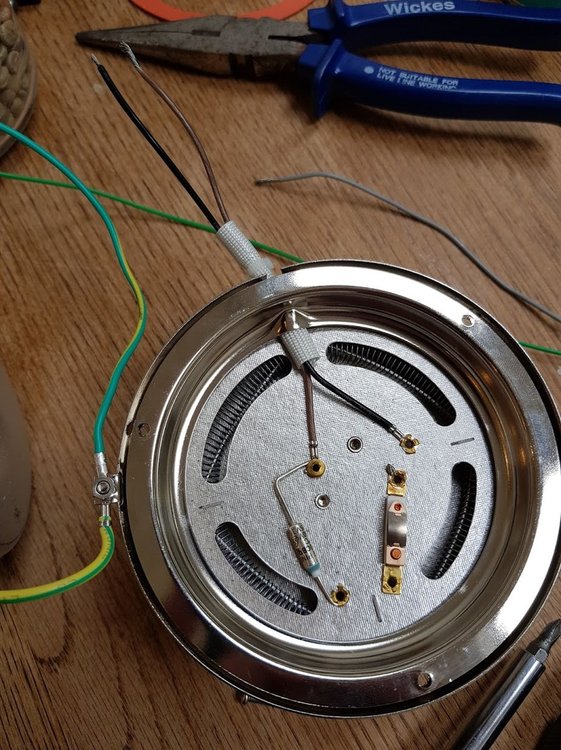
Heating element out of case:
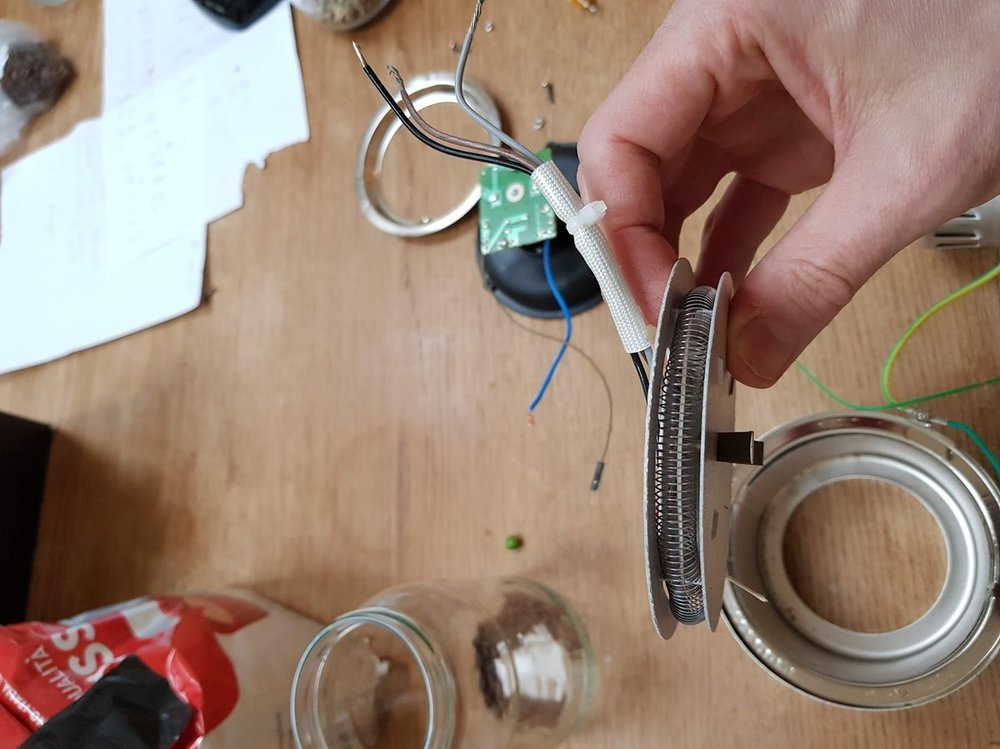
The elements heat up really fast and hot. I only dared to test this for a couple of seconds without the fan (here’s a picture of it at 166v, with the dimmer module from the previous post controlling the ac voltage)
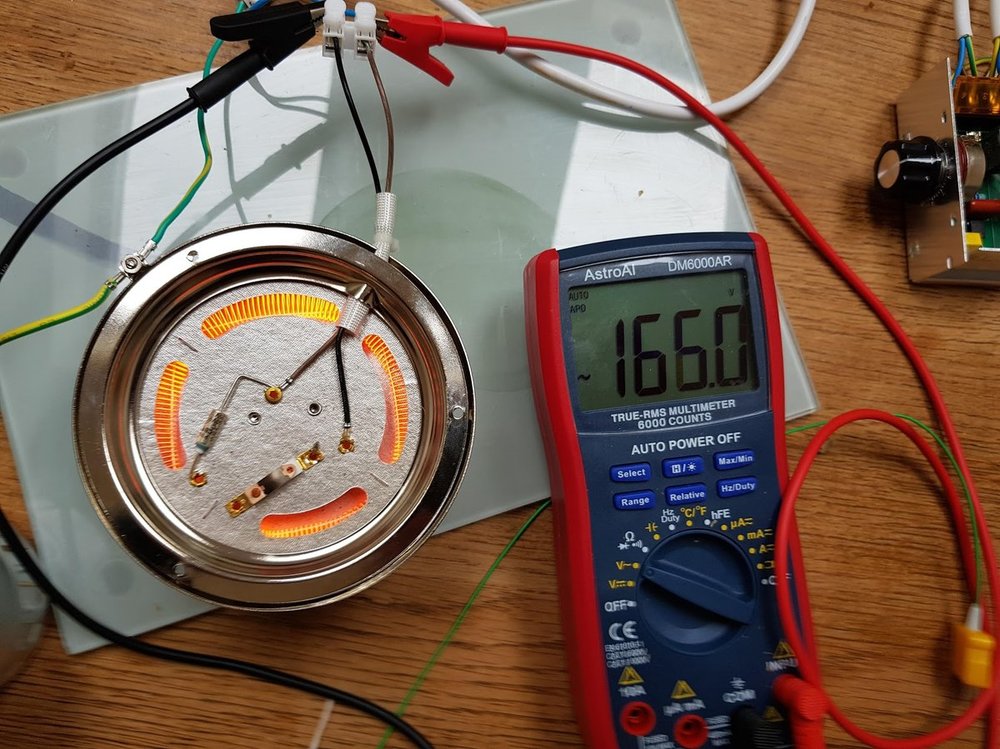
After mounting it on the tin can and checking the grounding, I took the unit outside to roast 100g of Colombia Excelso Huila from Redber.
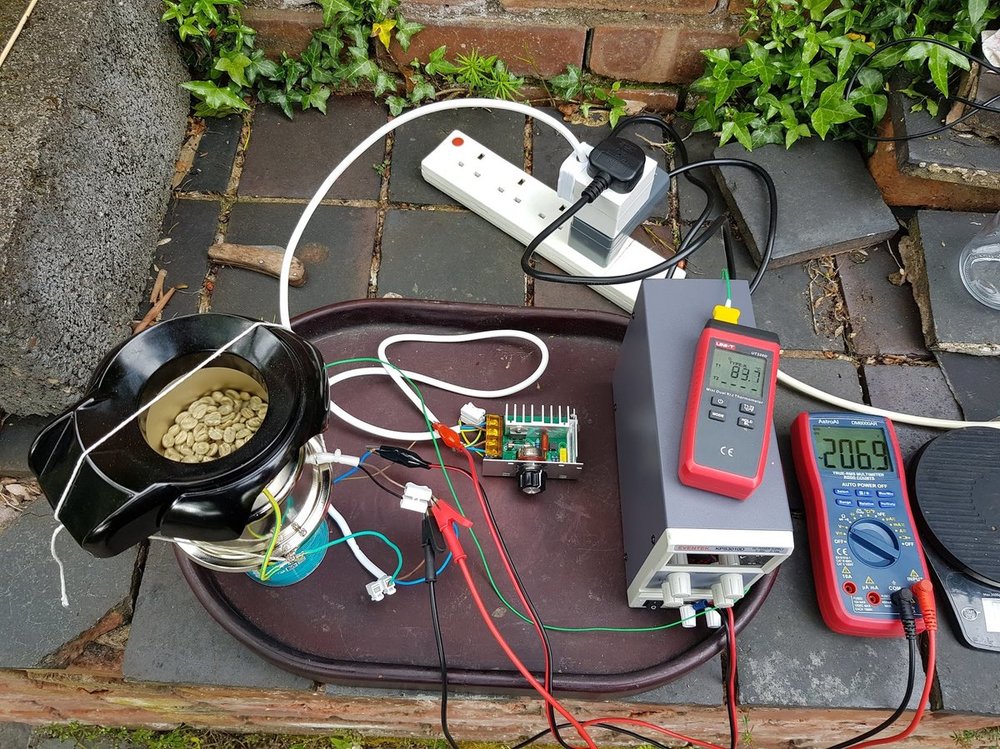
The outside temp was about 9c today and a bit windy. I started with the fan jacked up to 30v/3a for maximum agitation and the heater at 207v. I then increased the temp of the beans by increasing the heater voltage until it maxed out at 237v about 5 mins in. Unfortunately the roast started stalling so with no more heating power I had to reduce the fan motor to increase the bean mass temp. I slowly reduced the fan motor in stages until the end of the roast (fan motor is yellow line/right axis in the chart below, bean mass temp is the blue line). I dumped the beans after reaching 214c at 20 mins.
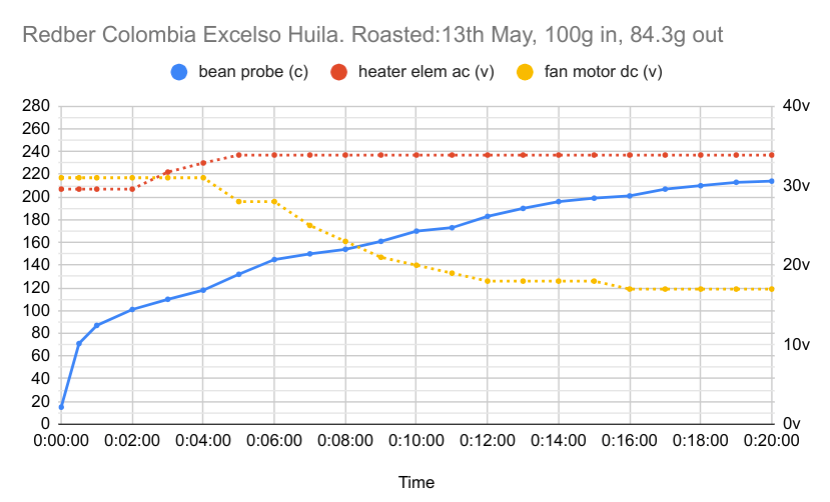
The roast was much more even through all the stages than before, but I was suffering from a lack of heat. The popper in its original state was easily able to take the temp up really high with the fan strong even outside (through 2nd crack into burnt roast territory in ~8 mins), so this is a problem with my rig rather than the popper components. I think the main issue is not having the plastic housing to protect from ambient temperature and wind. I could put this back on, or maybe lag the heater and chamber.
The other option might be to increase the input bean mass. I might try this first since there’s plenty of fan power to move the greens around.
Anyway, here’s a picture of the beans at the end.
